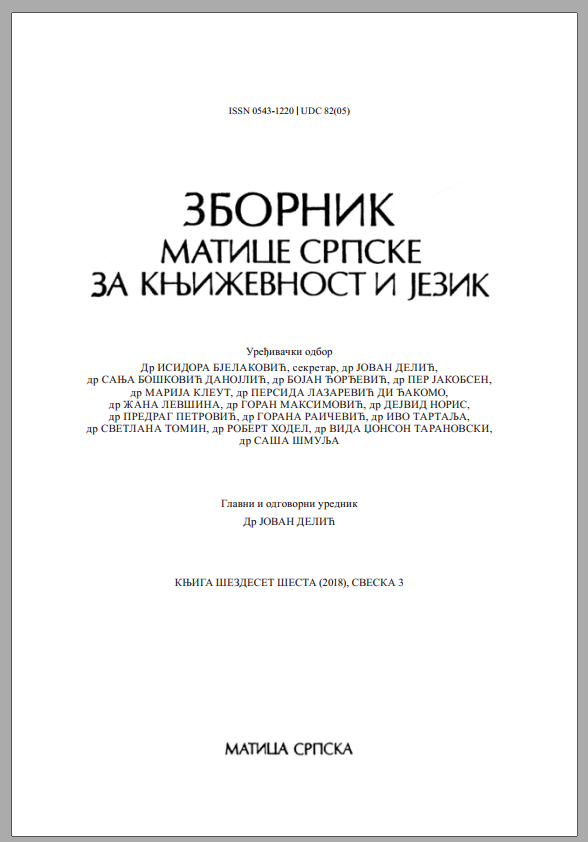СЛИКА ТОТАЛИТАРИЗМА У ПРИПОВЕСТИ ПАЛИКУЋА И ТЕРЕЗА МИЛОСТИ ПУНА (1976) Р. Б. МАРКОВИЋА
THE IMAGE OF TOTALITARISM IN THE STORY PALIKUĆA I TEREZA MILOSTI PUNA (1976) BY R. B. MARKOVIĆ
Author(s): Slađana IlićSubject(s): Language and Literature Studies
Published by: Матица српска
Keywords: политика и књижевност; уметничка истина; књижевни поступак; стилска средства
Summary/Abstract: Even though the first narrative plane of “Palikuća i Tereza milosti puna” is dominated by motives linked to domestic abuse, other planes are dominated by motives connected to political abuse of Serbian peasants (1944–1953). From today’s point of view, and due to the force of his artistic expression, Marković’s picture of Serbia under the early Titoist regime may be more faithful and striking than many historical reports on that time. Therefore, Marković’s prose, in accordance with the principle of the so-called narrative turn – after which a story is seen by social and humanistic sciences as a “form of knowledge storage” as well – is also recognized as a convincing truth about Serbia after the Second World War, or truth about the fate of common people in 1940s and 1950s
Journal: Зборник Матице српске за књижевност и језик
- Issue Year: 66/2018
- Issue No: 3
- Page Range: 833-845
- Page Count: 13
- Language: Serbian

